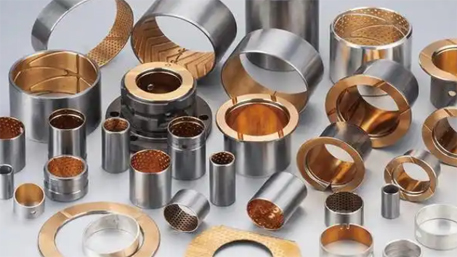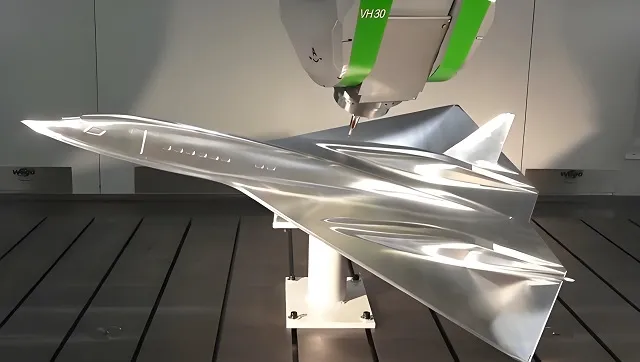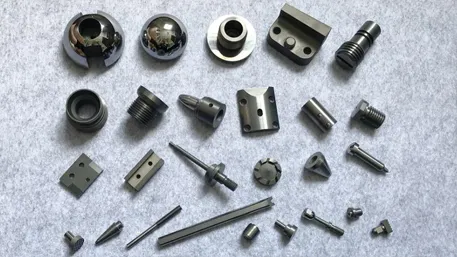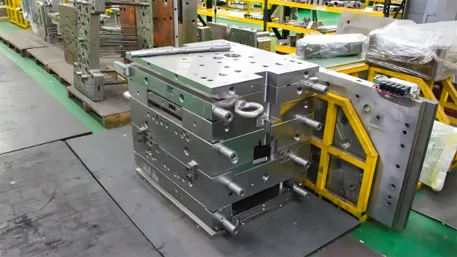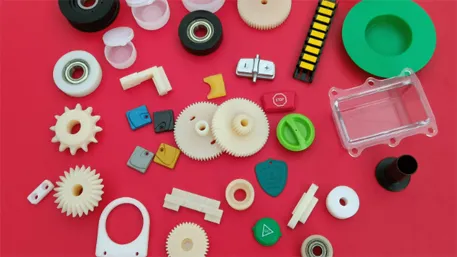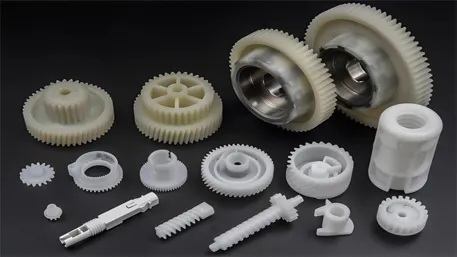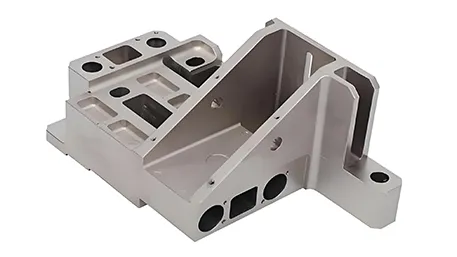In the realm of mechanical engineering, where reliable motion and reduced friction are essential for the efficient operation of machinery, bushings play a crucial role. Among the various types of bushings available, custom steel back sintered bimetal bushings have emerged as a preferred choice for numerous industries. These bushings combine the strength of steel with the self-lubricating properties of sintered materials, offering superior performance and durability. With the advancements in CNC (Computer Numerical Control) technology, the production of custom steel back sintered bimetal bushings has reached new heights of precision and customization. This article explores the technical capabilities, customization process, material selection, quality control, and industry applications of these high – performance bushings.
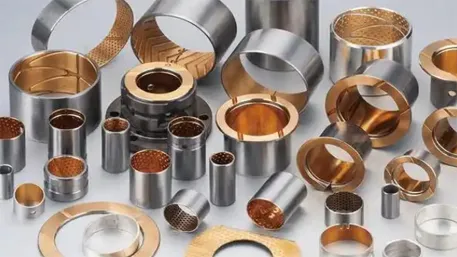
I. Technical Prowess: Redefining Bushing Precision
(A) Unmatched Dimensional Accuracy
CNC machining systems are engineered to achieve exceptional dimensional accuracy in the production of steel back sintered bimetal bushings. With positioning accuracy reaching ±0.003mm and repeat positioning accuracy of ±0.005mm, we can fabricate bushings with extremely tight tolerances. For example, when manufacturing bushings for high – precision automotive engines, the inner diameter and outer diameter can be maintained within ±0.003mm, ensuring a perfect fit with the mating components. This level of accuracy minimizes radial play, reduces vibration, and enhances the overall performance and lifespan of the machinery.
(B) Complex Geometry Machining
Five – axis CNC machining technology enables the creation of steel back sintered bimetal bushings with complex geometries. Whether it’s bushings with internal grooves for enhanced lubrication, flanged bushings for specific mounting requirements, or bushings with irregular outer shapes, the five – axis system can execute these designs in a single setup. Compared to traditional machining methods, which often require multiple setups and are more prone to errors, five – axis CNC machining reduces setup – related errors from ±0.02mm to within ±0.005mm. Moreover, it boosts production efficiency by over 50%, significantly shortening the lead time for custom bushings. This allows industries to quickly adapt to changing design requirements and reduce production delays.
(C) Advanced Sintering and Bonding Processes
The production of steel back sintered bimetal bushings involves a combination of sintering and bonding processes that are optimized through CNC – controlled operations. During sintering, metal powders are compacted and heated to a temperature below their melting point, causing them to fuse together and form a dense, porous structure. CNC – controlled furnaces ensure precise temperature control and uniform heating, resulting in consistent material properties. The bonding process between the steel back and the sintered layer is also critical. Advanced adhesive technologies and CNC – monitored pressure and temperature conditions are used to create a strong, reliable bond. This integration of processes ensures that the bushings have excellent load – bearing capacity and self – lubricating performance.
II. End – to – End Customization: Tailoring Bushings to Your Exact Specifications
(A) In – Depth Requirement Analysis and Design Conceptualization
When you approach us with your bushing requirements, our experienced engineering team engages in detailed discussions to understand your application, performance expectations, and design preferences. We consider factors such as the operating environment (temperature, humidity, and corrosive conditions), the type of load (static, dynamic, or oscillating), and the required service life. Using state – of – the – art CAD/CAM software, we generate multiple design concepts. We then collaborate closely with you, refining the designs until they perfectly align with your vision. Whether you need a standard bushing with a unique modification or a completely new design for a specialized application, we have the expertise to bring your ideas to life.
(B) Strategic Material Selection and Cost Analysis
Based on the finalized design, we recommend the most suitable materials for your steel back sintered bimetal bushings. The steel back is typically made from high – strength carbon steels or alloy steels, such as 1045 or 4140, which provide excellent structural support. For the sintered layer, materials like copper – lead, bronze – graphite, or iron – graphite are commonly used, depending on the specific requirements of the application. Copper – lead sintered materials offer high load – carrying capacity and good anti – seizure properties, while bronze – graphite materials provide excellent self – lubrication and wear resistance. Simultaneously, we conduct a detailed cost analysis, factoring in material costs, machining complexity, and production volume, to provide you with a transparent and competitive quote.
(C) Precision Manufacturing and Order Tracking
Once you approve the design and quote, production commences. You can monitor the progress of your order in real – time through our dedicated online tracking platform. Our skilled technicians follow strict manufacturing standards, using advanced CNC machines, sintering furnaces, and bonding equipment to produce bushings that meet the highest quality benchmarks. We keep you informed at every stage of the production process, from raw material procurement to the final inspection.
(D) Rigorous Quality Assurance and Timely Delivery
After production, each steel back sintered bimetal bushing undergoes a rigorous quality inspection. Only bushings that meet our exacting standards are shipped to you. We perform dimensional inspections using coordinate measuring machines (CMMs) to ensure that all critical dimensions are within ±0.003mm. Surface finish measurements are also taken to ensure that the surface of the sintered layer meets the required roughness specifications for optimal lubrication. In addition, we conduct mechanical tests, such as hardness testing, load – bearing capacity testing, and wear resistance testing, to validate the performance of the bushings. We also offer comprehensive after – sales support, addressing any concerns you may have during the product’s lifecycle.
III. Strategic Material Selection: Choosing the Right Materials for Optimal Performance
(A) Steel Back Materials
- 1045 Carbon Steel: This is a medium – carbon steel with good mechanical properties, including a tensile strength of up to 600 MPa. It offers a balance of strength and machinability, making it suitable for a wide range of applications where the bushing needs to withstand moderate loads.
- 4140 Alloy Steel: With alloying elements such as chromium, molybdenum, and manganese, 4140 alloy steel has higher strength, hardness, and fatigue resistance compared to 1045 carbon steel. It can achieve a tensile strength of up to 1030 MPa after heat treatment, making it ideal for applications with high – stress and heavy – load requirements, such as in industrial machinery and automotive drivetrains.
(B) Sintered Layer Materials
- Copper – Lead Sintered Materials: Copper – lead sintered bushings are known for their high load – carrying capacity and excellent anti – seizure properties. The lead content in the material helps to reduce friction and prevent metal – to – metal contact, making them suitable for applications where there is a risk of seizure under heavy loads or high – speed operation, such as in engines and transmissions.
- Bronze – Graphite Sintered Materials: Bronze – graphite sintered bushings combine the strength and wear resistance of bronze with the self – lubricating properties of graphite. The graphite particles dispersed in the bronze matrix provide continuous lubrication, reducing the need for external lubrication and minimizing wear. These bushings are commonly used in applications where low friction, high wear resistance, and long service life are required, such as in pumps, compressors, and textile machinery.
- Iron – Graphite Sintered Materials: Iron – graphite sintered bushings offer a cost – effective solution with good mechanical properties and self – lubricating characteristics. They are suitable for applications with moderate loads and speeds, and are often used in general – purpose machinery, agricultural equipment, and household appliances.
IV. Stringent Quality Control: Ensuring Top – Tier Bushing Quality
(A) Raw Material Inspection
All incoming raw materials for steel back sintered bimetal bushings are subject to strict quality checks. We use spectroscopic analysis to verify the chemical composition of the steel and sintered materials, ensuring that they meet the required standards. For example, when using 4140 alloy steel, we confirm that the chromium, molybdenum, and manganese contents are within the specified ranges. Additionally, hardness testing, tensile testing, and powder particle size analysis (for sintered materials) are performed to ensure the material’s integrity and suitability for the intended application.
(B) In – Process Monitoring
Throughout the manufacturing process, we employ statistical process control (SPC) techniques to monitor key manufacturing parameters. Regular sampling and data collection help us identify and correct any potential issues promptly. We monitor parameters such as sintering temperature, pressure, and time, as well as machining parameters during the shaping of the steel back and the finishing of the bushing. If any parameter deviates from the set values, we can adjust the process in real – time to ensure consistent product quality.
(C) Final Product Validation
Before shipping, each bushing undergoes a comprehensive inspection. We use CMMs to verify dimensional accuracy, ensuring that all critical dimensions are within ±0.003mm. Surface roughness measurements are taken to ensure that the sintered layer has the appropriate texture for lubrication. In addition, we conduct functional tests, such as friction testing, wear testing, and load – cycle testing, to simulate real – world operating conditions and validate the performance of the bushings. Only bushings that pass all these tests are considered ready for delivery.
V. Diverse Industry Applications: Empowering Multiple Sectors
(A) Automotive Industry
In the automotive industry, custom steel back sintered bimetal bushings are used in various components, including engine crankshafts, camshafts, and suspension systems. These bushings help to reduce friction, minimize wear, and improve the overall efficiency and reliability of the vehicle. For example, in an engine, the bushings in the crankshaft main bearings and connecting rod bearings need to withstand high loads and speeds while maintaining low friction. Custom – made bushings with the right combination of steel back and sintered layer materials can meet these demanding requirements, contributing to better engine performance and fuel economy.
(B) Industrial Machinery
Industrial machinery, such as pumps, compressors, and conveyor systems, rely on bushings to ensure smooth and reliable operation. Custom steel back sintered bimetal bushings can be designed to withstand the specific operating conditions of these machines, such as high temperatures, corrosive environments, and heavy loads. In a pump, for instance, the bushings in the impeller shaft and bearing housing need to have excellent wear resistance and self – lubricating properties to prevent premature failure and reduce maintenance costs. The use of custom bushings can enhance the performance and lifespan of industrial machinery, increasing productivity and reducing downtime.
(C) Aerospace Industry
The aerospace industry demands components with the highest levels of quality, reliability, and performance. Custom steel back sintered bimetal bushings are used in aircraft engines, landing gear systems, and flight control mechanisms. These bushings need to be lightweight, yet strong enough to withstand the extreme conditions encountered in flight, such as high altitudes, rapid temperature changes, and intense vibrations. The precision manufacturing capabilities of CNC technology, combined with the advanced material properties of steel back sintered bimetal bushings, make them an ideal choice for aerospace applications, ensuring the safety and efficiency of aircraft operations.
(D) Agricultural Equipment
Agricultural equipment, such as tractors, harvesters, and irrigation pumps, operates in harsh outdoor environments with varying soil conditions and weather. Custom steel back sintered bimetal bushings are used in various components of agricultural machinery to reduce friction, prevent wear, and improve the durability of the equipment. For example, in a tractor’s transmission system, the bushings need to withstand the high torque and shock loads generated during operation. Custom – made bushings can be designed to meet these specific requirements, ensuring the reliable operation of agricultural equipment and increasing its service life.
VI. Frequently Asked Questions (FAQ)
(A) What is the typical precision of custom steel back sintered bimetal bushings?
Our CNC machining can achieve a dimensional tolerance of ±0.003mm, ensuring that the bushings fit precisely with the mating components and provide optimal performance.
(B) How do I choose the right material combination for my bushings?
The choice of material combination depends on your application’s requirements, such as the operating load, speed, temperature, and environmental conditions. Our engineering team can provide expert advice and recommend the most suitable materials based on your specific needs.
(C) What is the lead time for custom bushings?
Lead times vary depending on the complexity of the design and order quantity. Simple designs can be completed in 3 – 5 days, while more complex ones may take 7 – 10 days. Rush orders are available upon request.
(D) Can CNC machining handle custom designs with complex geometries?
Absolutely. Our five – axis CNC machines are capable of fabricating bushings with intricate geometries, including internal grooves, flanges, and irregular shapes, to meet even the most demanding design requirements.
(E) How much does it cost to customize steel back sintered bimetal bushings?
Costs are determined by factors such as material, design complexity, precision requirements, and production volume. While small – batch customization may be relatively costly, economies of scale can significantly reduce per – unit costs for larger orders.
VII. Customer Testimonials
An automotive manufacturer approached us to develop custom steel back sintered bimetal bushings for their new high – performance engine. Our team used advanced CNC machining and material selection techniques to create bushings that met the strict performance requirements. The bushings not only reduced engine friction by 15% but also increased the engine’s lifespan by 20%. As a result, the manufacturer was able to improve the overall performance of their vehicles and gain a competitive edge in the market.
An industrial pump company needed custom bushings for their pumps operating in a corrosive chemical environment. We designed and manufactured steel back sintered bimetal bushings with a special corrosion – resistant sintered layer material. The new bushings significantly reduced wear and tear, leading to a 30% reduction in maintenance costs and an increase in the pump’s uptime. The customer was highly satisfied with the performance and reliability of the custom bushings.
Reach Out Now for Your Custom Steel Back Sintered Bimetal Bushings!
Whether you are in the automotive, industrial, aerospace, or agricultural sector, our team of experts is ready to collaborate with you. We offer a seamless end – to – end service, from design to delivery. Contact us today to discuss your project requirements and take the first step towards getting top – quality custom steel back sintered bimetal bushings that will enhance the performance and durability of your machinery.
